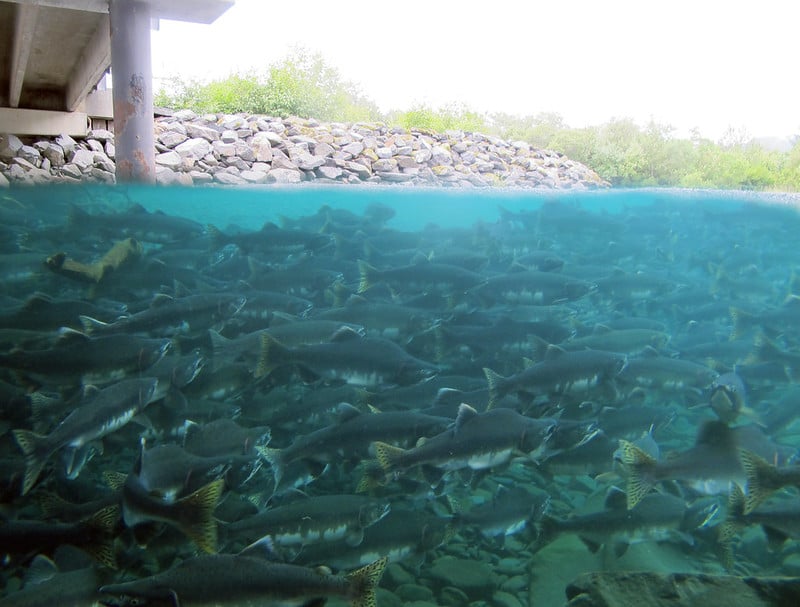Pink Salmon Stunt Steelhead Growth

Photo: Alaska Region U.S. Fish & Wildlife Service/Flickr
My buddies who live in Alaska have a nearly-unanimous opinion of pink salmon—they’re annoying. When it’s their year to run, they show up in huge numbers, making it tougher to sift through to catch the big rainbow trout and dolly varden that so many fly anglers love.
I’ve never met a salmon I didn’t like, though, and pinks are no exception. Sure, I was upset this year when I hooked a pink from a pod of enormous rainbow trout (the biggest I’d ever seen), but the salmon put up a great fight. My only “saltwater” fly fishing experience came from casting to pinks and dollies in the surf off Kodiak Island a few years ago.
After reading this story from Eric Barker in The Lewiston Tribune, however, I think I’m joining my friends in their attitude towards pinks. It turns out that the recent abundance (over-abundance is probably more accurate) of pink salmon is leading to smaller wild steelhead.
Barker looks at a study from Ryan Vosbigian at the University of Idaho, where he round that the habitat of steelhead and pink salmon overlap quite a bit, specifically with the food the two fish eat.
“What we’re finding is that there is an effect of pink salmon being so abundant that the common resource is a little more sparse, and so steelhead are coming back slightly shorter,” Vosbigian is quoted as saying in Barker’s article.
The over-abundance of pink salmon is bolstered by hatchery programs all throughout the Pacific, and slightly warmer ocean temperatures that are more favorable to pink salmon. Pinks are used primarily in canned salmon, but are also filleted and flash-frozen to be sold at supermarkets. According to the Alaska Department of Fish & Game, they’re “one of the most important Pacific salmon for commercial fisherman in Alaska…Annual statewide harvests have been around 100 million pink salmon since about 1990.”
Pinks are most abundant in rivers during odd years, and Vosbigian hypothesized that during the years when adult pinks were at their highest, he’d be able to see that reflected in smaller average steelhead size. That’s exactly what happened. Steelhead that returned during odd years were 1.5 inches shorter than fish that returned during even years, according to Barker’s story.
“While the study didn’t look to see if abundant pink salmon during odd years had an effect on steelhead survival, that is something fish managers have suspected for some time,” Barker wrote. “They have noted a steelhead abundance cycle that appears to follow the same even and odd year cycle but, so far, haven’t been able to definitively say it is caused by pink salmon.”
It shouldn’t surprise anyone that there’s such an interconnected relationship between anadromous fish, but it’s shocking to see it quantified in such a way. It’s also interesting that we’re seeing the results of too many hatchery pink salmon dumped into the ocean. Whether this makes any difference in fishery management will have to be determined at a later date.
TU Releases New Film, 'Lifeblood'











